-
Posts
2,120 -
Joined
-
Last visited
Content Type
Profiles
Blogs
Forums
American Weather
Media Demo
Store
Gallery
Posts posted by Newman
-
-
Echoing what Andy said on twitter here, this has been my thinking with any tropical system development in the MDR this month:
https://x.com/AndyHazelton/status/1952439813619003854
We've had round after round of SAL outbreaks across the Atlantic the past month or two. It looks to relax a bit in this favorable stretch approaching, but I won't believe any model until we see a potent AEW with persistent convection. Also, beyond just a wave developing into a TC, I think the real key in the modeling is how they handle the weak ULL in the north Atlantic and if that allows for a weakness for a TC to slip north.
Current SAL situation:
12z GFS with the tropical wave and some lessening of the dry upper air regime.
-
 1
1
-
-
The WPC just issued a Moderate risk for flash flooding across the I-95 corridor tomorrow. The HRRR and NAM are both showing PWATs upwards of 2.2-2.5" and the front looks to be draped right across NW PA with plenty of moisture transport into the region
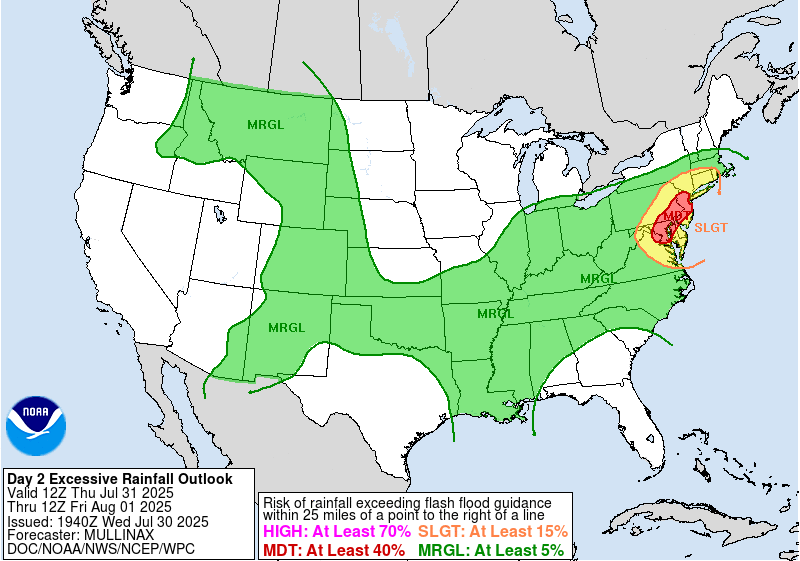
-
 2
2
-
 2
2
-
 1
1
-
-
Latest 8pm NHC advisory bumped it up to 40% odds
1. East of the Florida Peninsula into the Northeastern Gulf (AL93):
An area of low pressure located offshore of the east coast of Florida continues to produce disorganized showers and thunderstorms primarily south of the center. This system is forecast to move westward across the Florida Peninsula on Tuesday and Tuesday night, eventually moving into the northeastern Gulf by the middle part of this week. Environmental conditions appear generally favorable for additional development if the system remains offshore, and a tropical depression could form as the system moves across the northeastern and north-central Gulf by the middle to latter part of this week.Regardless of development, heavy rainfall could produce localized flash flooding over portions of Florida and the north-central Gulf coast through the middle to latter portion of this week.
* Formation chance through 48 hours...low...30 percent.
* Formation chance through 7 days...medium...40 percent.-
 3
3
-
-
My brother in Lititz last night got smoked with nearly 6" of rain. More on the way today
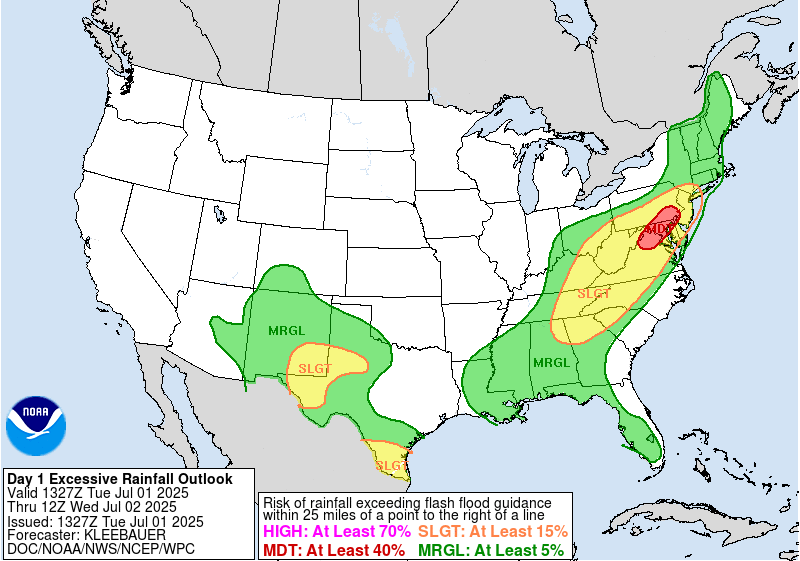
-
 1
1
-
 1
1
-
 1
1
-
-
-
-
-
Things look stormy and active from Wednesday through the weekend across the front range and plains. A pretty potent shortwave trough and -PNA will result in quite a few disturbances rotating through the region. The orientation and strength of the PNA will determine where the bulk of the precip goes and whether the front range gets in on a favorable moisture advection regime. Currently a marginal risk from the SPC for Wednesday
-
I'm not sure we even picked up 1 inch here in Laramie, under a WWA for 3-6"
-
16 minutes ago, MGorse said:
Peak gust at RDG was 62 mph.
Gotcha, was just going off the MesoWest site
https://mesowest.utah.edu/cgi-bin/droman/meso_base_dyn.cgi?stn=KRDG&unit=0&timetype=GMT
-
 2
2
-
-
My folk in Fleetwood had a big tree go down in the backyard this afternoon. Looks like peak gust at KRDG was 57 mph this afternoon. More shallow convection moving through right now
-
 1
1
-
-
-
12z Euro is pretty much bone dry for the next 10 days across the Lehigh Valley. GFS keeps temps in lower 50s while Euro gets into mid-upper 50s. Quite possible this final stretch of February gets some climate stations back closer to normal for the month after a cold start
-
To be honest, the coastal storm itself is probably long gone at this point for much of the SE PA region. The ULL snows though are very much a plausible possibility with a C-1"
-
 2
2
-
-
Did the 12k NAM just give Philly like 8 inches? Lol. Even the 3k NAM, which skunks Philly, shifted quite a bit NW and gives ACY like 4-6. Don't believe it
-
 2
2
-
-
Quite the h5 look, so close to something big but it'll probably be too little too late. If at this point the ULL/trough was neutral and not slightly positive, you'd be able to scoop up enough PVA to swing it into at least the Philly area. Some very intense curvature vorticity being advected towards the downstream flank of the trough, but that pesky confluence streak in northern Maine is helping to slow how quickly this turns neutral (as well as the fast flow in general). If a long range smoothed ensemble picked up on this exact h5 look, I'd be screaming KU too. But when it came down to it, we were about 12-18 hours off in timing.
-
 3
3
-
 1
1
-
-
23 minutes ago, Kevin Reilly said:
How are we doing with the new ingested data into the models tonight??
Quick glance seems like H5 is improved on almost all models, if the trend continues I'd expect some ticks back NW. However even with improvement still dealing with a lack of PVA getting into the region with the ULL turning neutral just too late
-
 2
2
-
-
Currently the tally in Fleetwood for the season is ~19.5-20 inches or so. There's been a whopping 12 "events" this winter with measurable snowfall... 11 of those events were 2 inches or less. Only 1 storm, the one on January 19th, dropped appreciable snow with 7.9 inches. Talk about a nickel and dime winter, or maybe more appropriately penny and nickel
-
 2
2
-
-
Genuinely can't remember the last time a storm shifted so bad on guidance, usually it stops bleeding at some point. The Ukie barely even has a surface reflection. It's comical actually
-
 3
3
-
-
Sister in Reading just lost power, KRDG just gusted to 56mph
-
 1
1
-
-
Yes the trends have been quite unfavorable, but I don't think we're done seeing changes with the evolution of the upper level low that tugs and phases with the southern vort. The past 4 runs of the Euro have been all over the place with that, it won't be resolved until we're closer in. The phase is just off too. Not saying the changes with the ULL will result in a better outcome, in fact we could see it continue to get worse with the phase. But the Euro still shows 6-8" SE if Philly in south Jersey. There's no reason to believe we can't squeak that NW a bit in 96-102 hours
-
 2
2
-
 1
1
-
-
1 minute ago, RedSky said:
Im back ECM came west with SECS amounts
Euro vs everyone
-
 1
1
-
-
HRRR spikes Philly into the lower 60s with the frontal passage tomorrow and just about mixes out (tiny inversion at the surface) to 850mb with 50-65kt winds. High wind warnings are rightfully justified, could be some widespread 50+ or even 60mph obs at the main reporting stations
-
 1
1
-
-
4 minutes ago, Ralph Wiggum said:
Do you think it received new data ie dropsonde or energy hitting the W Coast?
Taking a step back looking at the North American view, the biggest change was the energy that hits the West Coast around hr90. It deamplifies the PNA ridge and doesn't allow the TPV to dig as far south and stay consolidated. When the ridge breaks down, it just shears out the northern stream. I guess we still have quite a ways to go to know what will happen with that energy and all of the other small nuances in the flow
-
 1
1
-



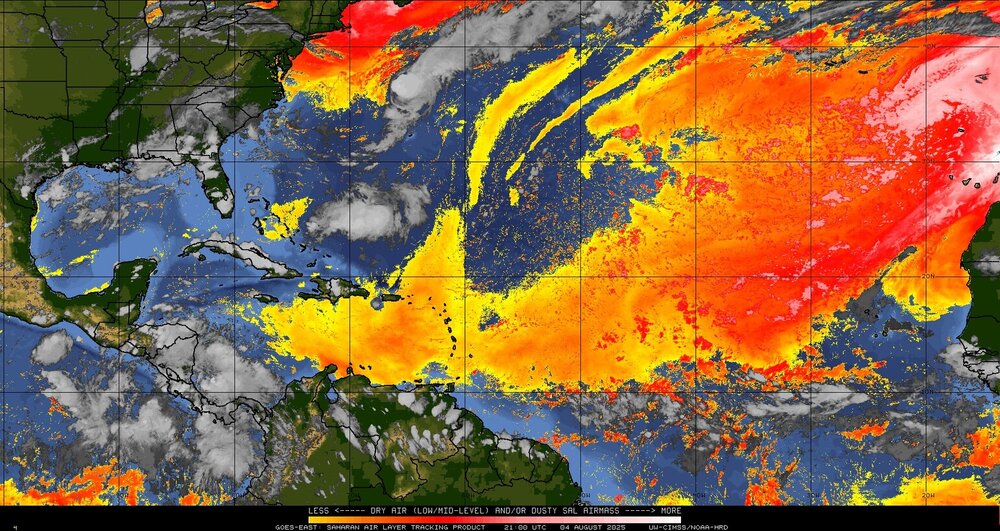
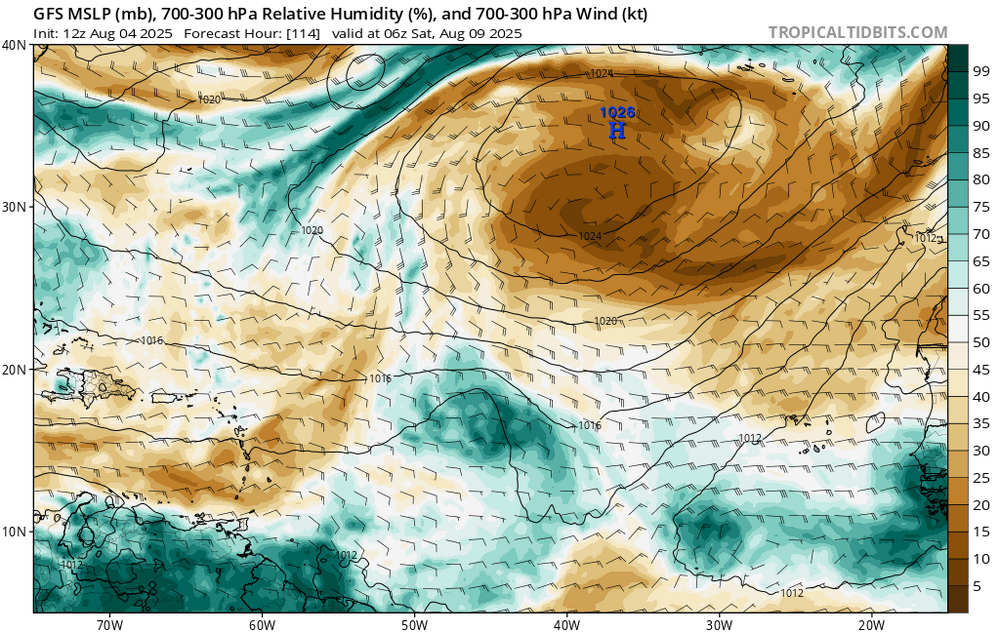
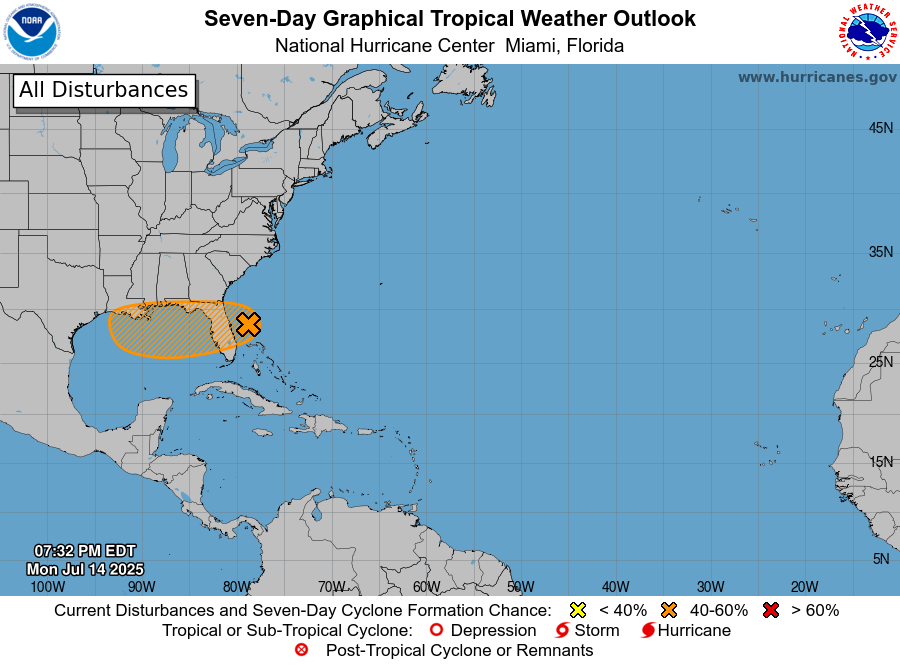

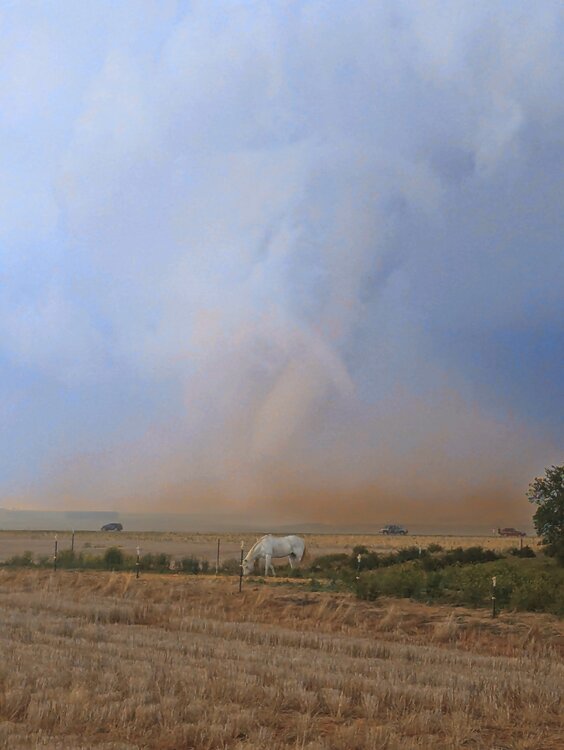
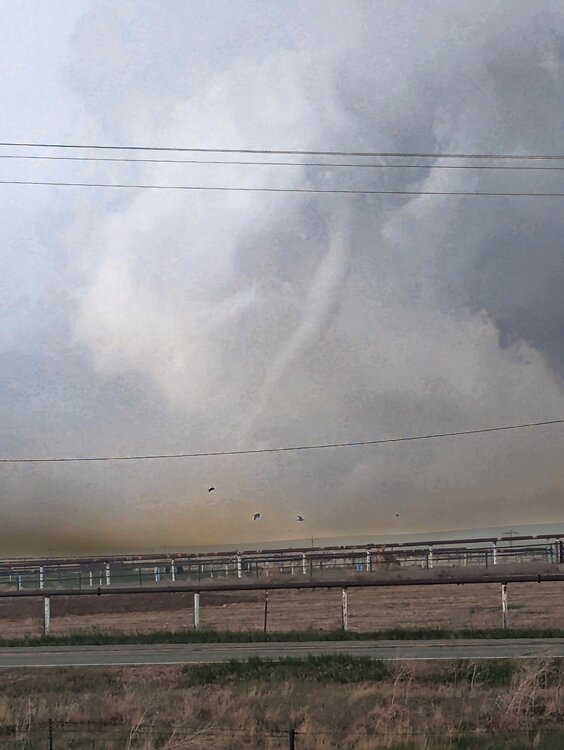
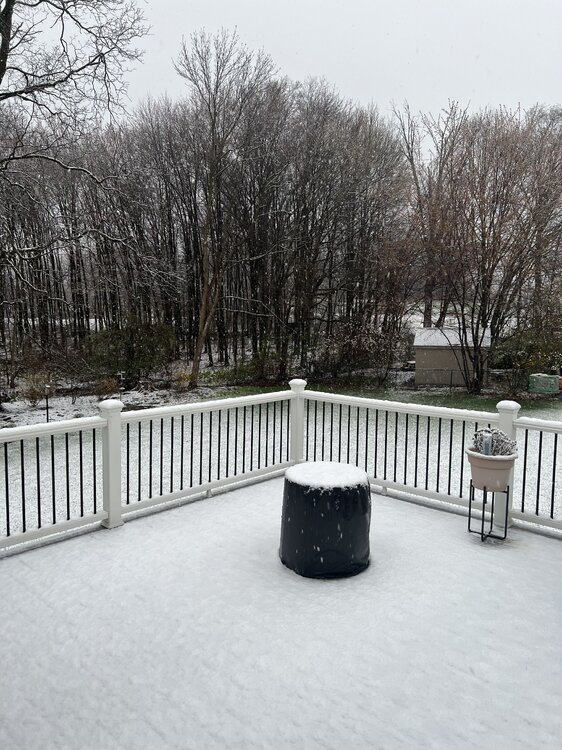
.thumb.jpg.4465063cf05810ed7d3a7b5571ae3bfb.jpg)
.thumb.png.fdaf7730b224f31bd6145fe17433c281.png)
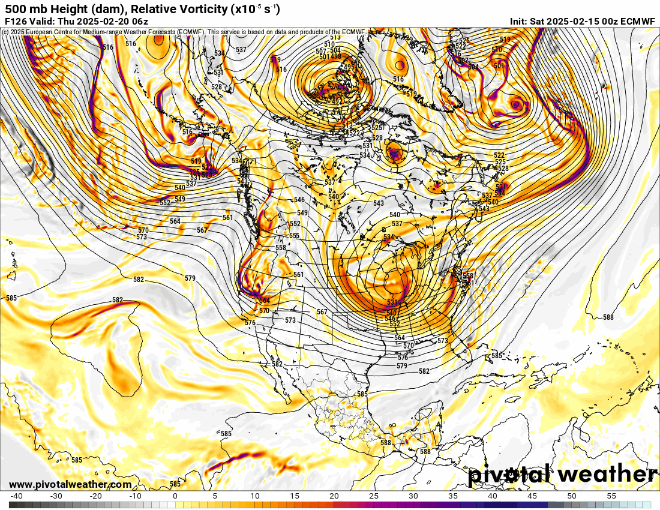
INVEST 97 NOW AT 10/60
in Tropical Headquarters
Posted
The EPS and GEFS both came out hot with current 96L as well and slowly backed off to the point now we're seeing significantly less individual ensembles even produce a weak tropical disturbance, if anything at all. The EPS was consistent with the quick recurve north and looks to have notched a victory here with regards to track, but initially it was much more potent with 96L. All of that to say... Until there's an actual tropical system, these models usually run hot on development. I think this next wave will take longer to develop than currently modeled.
I believe the pattern favors the next wave making it into the SW Atlantic, and the environment is much more conducive to development. Give it 4-5 days here and the ensembles will be telling